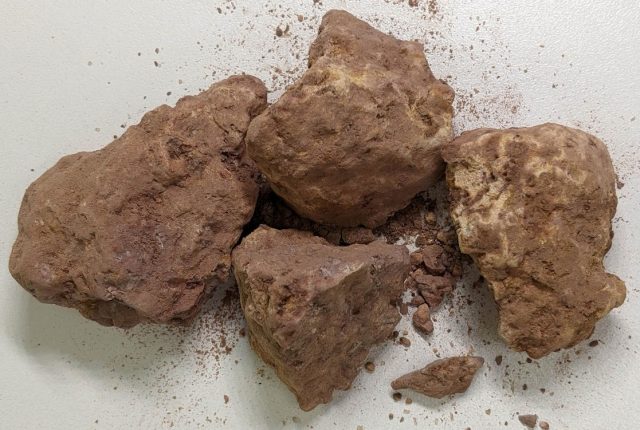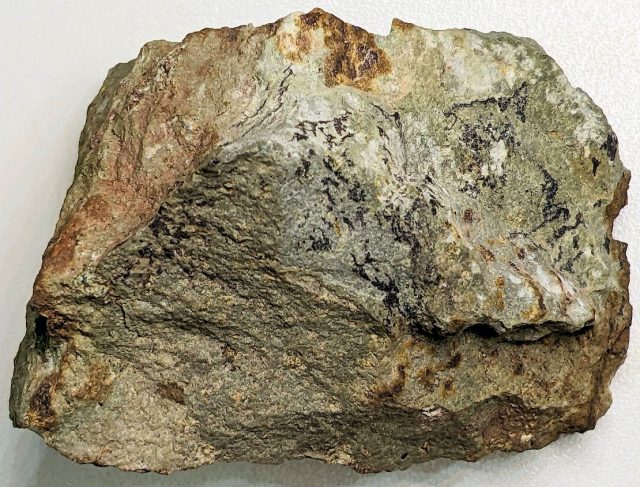Minerals are inorganic chemicals with possible metallic content as well. Their analysis is often much like that described under Inorganic Chemicals, but minerals are often more complex mixtures of several inorganic chemicals and commonly do not benefit from as much control. In fact, humans usually have had no control over their creation and have to exercise great care in selecting them from the natural environment. There is an increased concern about such matters as heavy metal content. In addition, our mineral analysis tends to support the needs of a different set of customers than does our inorganic chemical analysis.
Minerals may be used as fill materials for plastics, paints, sealants, adhesives, or other composite materials. They may be the raw materials for glass making or from which ceramic materials are made. They may be water filter materials such as sand, diatomaceous earth, or magnesia. Minerals may be food additives such as silica, diatomaceous earth, and calcium carbonate, though these are likely to have to be refined. They may be ingredients for concrete, mortar, grout, plaster, or dry wall. Or, they may be refined for metal extraction.

WD-XRF Analysis:
- Quantitatively determine the elemental composition for elements sodium and heavier
- Depth of detection ranges from a few micrometers to 2 mm depending upon matrix material
- Detect very low concentration elements such as heavy metals down to the 10 – 20 ppm range
- Carbon and nitrogen concentrations can be measured for polymer sheet materials with inorganic fill particles in the outer micrometer of the material
X-Ray Diffraction (XRD) Analysis:
- Identification of a crystalline material from its diffraction pattern
- Determine the weight percent of a mix of several crystalline inorganic materials
- Distinguish different chemical phases of a material with the same chemical formula
- Detect and measure impurities or crystalline contaminants
XPS Analysis:
- Quantitative elemental analysis for all elements except hydrogen and helium to a depth of about 20 nm
- Particle surface chemistry complete with quantitative elemental composition and chemical phase analysis of multiple complex phases, see the example of a complex, 3-chemical phase feldspar
- Differentiate surface chemistry with interior chemistry by analyzing as-received materials compared to freshly ground particles of material, argon ion sputtered material, or material analysis by XRF or by FTIR
- Great sensitivity to a very thin surface chemistry affecting particle bonding in a polymer matrix or agglomeration control surface treatments
- Used to determine and measure the degree of surface hydration
- Used to identify fill materials added to polymers following burn-off of the resin by TGA or other means
- When the sample quantity is very limited, it can perform an analysis when XRF does not see enough material
Thermogravimetry or TGA Analysis:
- Determine decomposition temperature and measure the weight loss as a function of temperature
- Measure the weight loss of water from hydrated materials
- Measure the weight of carbon dioxide loss from a carbonate
- Impurity detection and measurement
- Determine the composition of some thermally decomposable materials such as the amount of silver carbonate in a silver oxide
- Measure the weight gain of a material in a given gas atmosphere, such as oxide formation in an oxygen or air atmosphere
Differential Scanning Calorimetry or DSC Analysis:
- Determine melting temperature and heat of fusion
- Determine energy and temperature of reaction between an inorganic material and another material
- Impurity detection and measurement by measuring the latent heat of melting or looking for an internal reaction upon heating
- Measure energy to desorb water or to decompose
- Measure temperature of a phase transition
Thermomechanical or TMA Analysis:
- Determine CTE or thermal expansion of materials in plate or cylindrical forms
- Determine the thermal expansion of powdered material inside a cylindrical holder
- Determine temperature of a phase change
SEM/EDS Analysis:
- Determine surface morphology and shapes of particles
- Determine particle sizes
- Map the distribution of elements or examine a particle or area for its elemental composition for carbon and heavier elements
FTIR Analysis:
- Offers quick determination of whether carbonates, phosphates, nitrates, nitrites, numerous minerals, or water are present with relative quantitative measurement between several samples
- Measures organic surface coatings and treatments to a 1 to 2 μm depth
- Detect differences in an organic coating thickness over an inorganic substrate material
Keyence 3D Optical Microscopy:
- Determine the size and shape of particles, using surface profiles to obtain particle height information
- Use color differences to indicate different chemical phases and their locations
- Use the LIBS enhancement for microanalysis elemental compositions
- Select typical or atypical areas for further analysis by other techniques
- Document the microscopic appearance associated with a spectrum obtained by another analytical technique
Mechanical Testing:
- Compression testing for compressive strength
Density Measurements:
- When a mineral is rather homogeneous, the measured density can help to identify it or at least eliminate other possible chemical phases

Examples of Mineral Analysis
Elemental and Crystalline Phase Analysis of a Mineral by XRF and XRD
Elemental and Chemical Phase Composition of the Surface of a Feldspar Mineral by XPS
